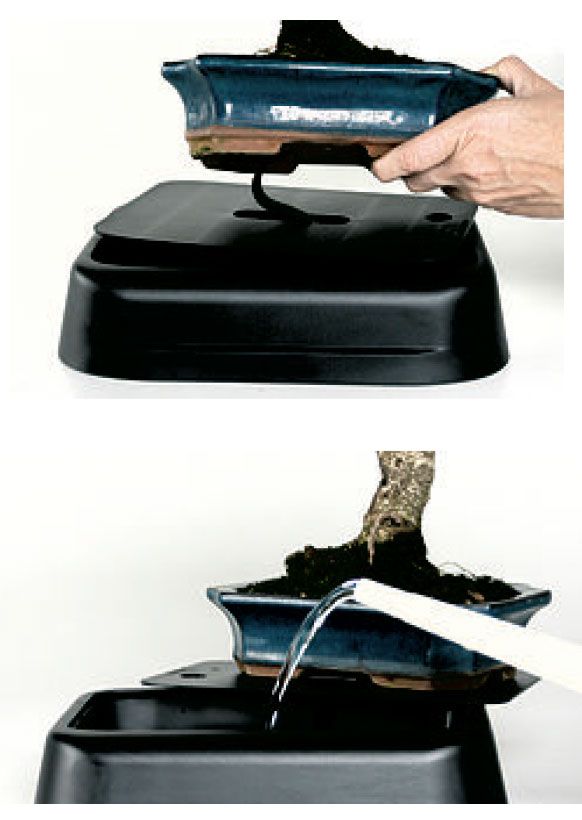It is common to have questions on how to water a bonsai the proper way. There are many available tools that will help you ensure that your bonsai is well-watered. Follow our advice to learn how to water bonsai properly.
To see all our products, click here.
Why do I have to water them?
The simplest reason why you have to water a bonsai is that plants cannot live without water.
Plants that live in nature reach the water stored deep in the soil with their roots. Plants that live in a pot only get the water that is in the pot. That is the reason why all plants that live in a pot, and of course the bonsai, require more or less frequent watering.
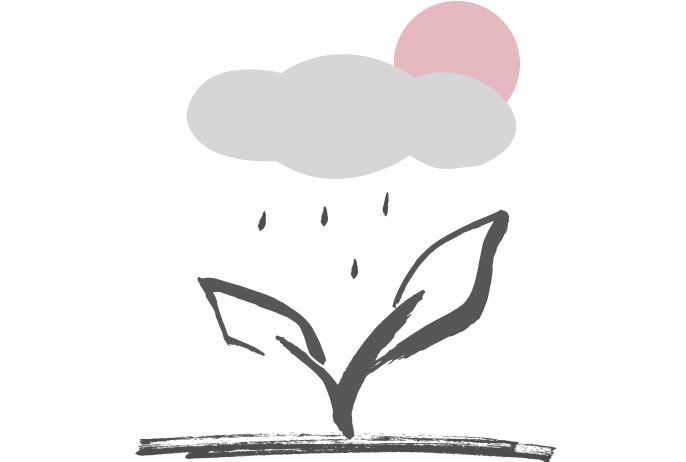
How to water bonsai trees?
When you see that the plant needs water, you must water thoroughly, which means “watering until all the soil is completely soaked.” To achieve this, a watering can with a rose with very fine holes is needed, so that the water comes out smoothly.
The bonsai are watered from above first, so that the humidity opens the pores of the soil. After a few minutes they are thoroughly watered again, until the water comes out of the drainage holes.
The tray that accompanies the indoor bonsai is used so that excess water does not drip on the furniture. After watering this tray should not be full of water. The level should not reach the holes in the pot. A bonsai that is always wet rots its roots. On the other hand, there are bonsai trees that, because they have a very pasty soil, cannot be watered well by this system, since the water slides down the sides of the pot and does not penetrate the soil. In this case, it would be necessary to make a transplant and change the soil.
You can find plastic and ceramic trays that prevent damage to furniture. It is not recommended that the bonsai stay permanently with the roots submerged in water.
Another option is to fill the tray with volcanic stone or Akadama, which creates environmental humidity with the remaining water.
So that the soil of these bonsai trees is well soaked, we can put them in the plastic tray that accompanies the indoor bonsai and leave them for about ten minutes. It is also necessary to water this way the bonsai that, by carelessness, have gone dry and do not soak well.
Never water with a vaporizer used to remove dust and give plants moisture. They are not used for watering.
They only moisten the surface of the pot, and the water does not reach the roots. In short: You have to water with an appropriate watering can or do it by immersion.
The small holes in the watering can rose help the bonsai better absorb water by imitating rainwater. You can find watering lances that adapt to hoses, or special watering cans for bonsai.
More information about watering cans, trays, hydrobons here.
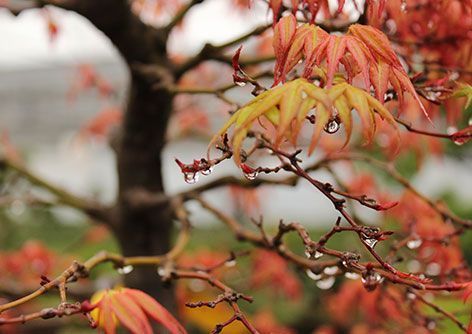
What is spraying?
Spraying means spraying the bonsai leaves with water dispersed under pressure in the form of fine rain.
Do I have to spray?
Trees living in the field often receive morning dew, which is an important source of vitality for plants, which absorb this water through their leaves. In the wild mountain valleys, the amounts of water collected by dew exceed those received by rain, which gives us an idea of the importance that dew has for these plants. The bonsai that live in cities, let alone those that spend long periods of time inside the houses, almost never receive this beneficial dew.
The bonsai that live in the houses do not receive rainwater either and their leaves get covered with dust. For this reason, it is important to spray the leaves from time to time to clean and vitalize the trees that live in dry environments.
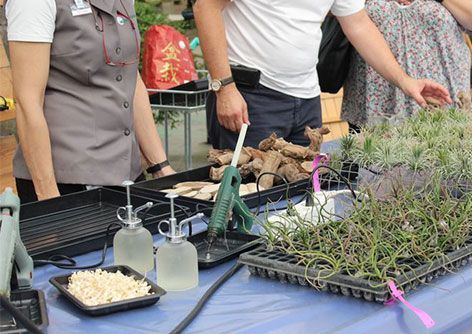
When do I have to spray?
If we only want to clean the leaves, spraying the plants once a week is generally enough. If what we want is to cheer up a tired bonsai, it will be necessary to spray the leaves every day.
The best time for spraying is at sunset. It is important to avoid spraying the bonsai in full sun, at noon, due to the harmful effects that can be produced.
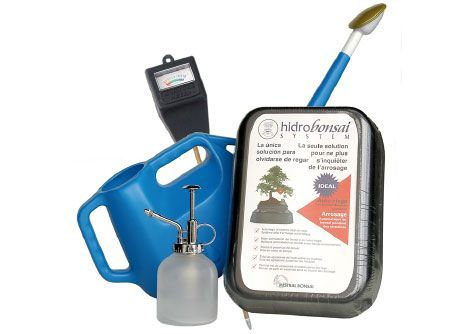
How do I spray?
Plants must be sprayed with a sprayer or hose that has a rose that allows the water to be released as a very fine rain. You must spray from top to bottom and from bottom to top, so that the water reaches all the tree’s leaves.
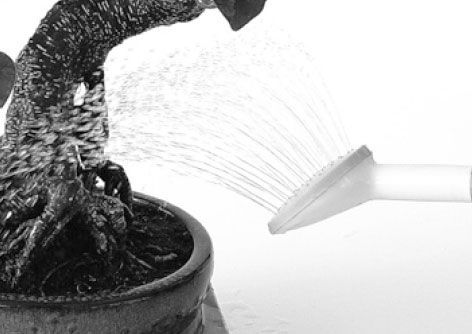
What water should I spray with?
Rainwater and dew water are clean water, which does not contain dissolved lime or other salts. The purer the water we spray with, the better it will be. The best water for spraying will therefore be rainwater or spring water that contains few dissolved salts.
If you spray with water that has a lot of lime, instead of revitalizing the plants, what you will do is cover the pores with lime and white spots will appear on top of the leaves. The plants that have hard and shiny leaves will be the ones that will stain the most (ficus, olive trees, orange trees). For this type of bonsai, if better water is not available, it will be advisable to spray the leaves only once a week to remove dust.
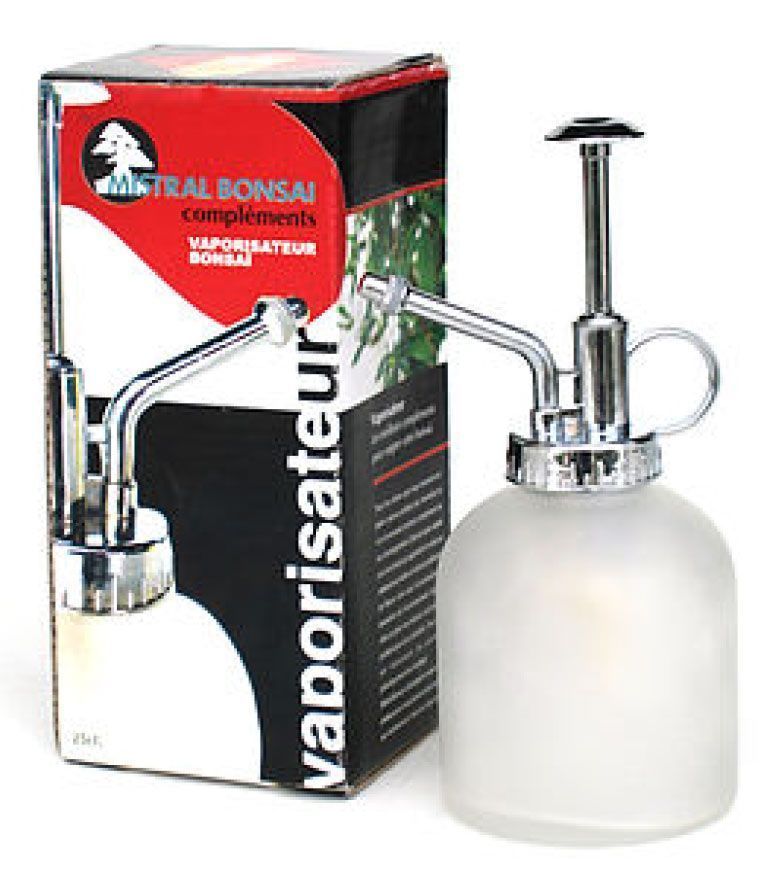
How to keep bonsai well-watered when you are away from home?
Frequent watering of bonsai can become a problem when you must be away from home.
If you have many bonsai, there are many watering systems on the market that regulate the frequency and duration of it in our absence.
If you only have a few bonsai, it will be more economical to buy a Hidrobonsai-System. This is located under the pot, and it doses the water to the tree through a wick. You can find it in our usual supplier of bonsai and accessories.
